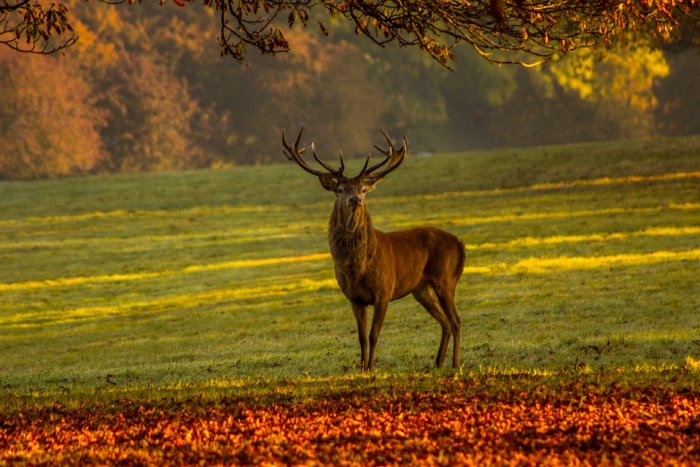Cernunnos ‘Horned One’ – Powerful Continental God Preserved In Celtic Beliefs As Master Of Animals
A. Sutherland - AncientPages.com - Cernunnos is one of the greatest and most ancient Celtic gods. He is the Lord of the Animals, the “Horned One.”
The 'cer' part of his name, relating to his antlers, means ‘horned.’
Cernunnos, Celtic horned god. Image credit: Wikipedia
His name, depictions, and cult are widely attested in ancient Romano-Celtic worship sites. Cernunnos’ significant role as a hunter and animal god is preserved in Celtic folklore under different names and representations. In British mythology, Cernunnos resembles Herne the Hunter, the horned God and Lord of the forest.
The worship of Cernunnos is believed to go back to the fourth century BC.
Only his depictions exist, but there are no myths of this great, mighty, though somewhat mysterious deity.
The name “Cernunnos” (“the horned one”) is only known from a single inscription found in Paris, France. This deity probably had several names; therefore, the inscription remains controversial.
Appearance Of Antlered God Cernunnos
The most common depiction of Cernunnos shows him with the horns; however, these horns are not related to domesticated animals but rather to a stag, suggesting the god’s strong connection with the powers of the wildwood and its mighty animals. In Norse beliefs, the branching antlers of a stag are associated with the Tree of Life, Yggdrasil, and the animal lives among the ash branches and eats its leaves. The stag was also held sacred by the Greek goddess Artemis.
The stag has been held sacred by many ancient civilizations. Image credit: Public Domain
Frequently depicted with one or more ram-headed serpents, Cernunnos bears a torch about his neck, a symbol of high status and holiness.
A well-known depiction of Cernunnos is that found on the silver votive Gundestrup Cauldron dated to the second century AD. His sitting cross-legged posture recalls that of the Buddha. The very frequent conventional pose has many statues of seated Hindu deities.
Cernunnos on the Pillar of the Boatmen, from the Musée national du Moyen Âge (Museum of the Middle Ages), in Paris, France. Image via Wikipedia
His images have been found in carved statues and reliefs dated to ancient Gaul (today modern France). As domesticated and wild animals always accompany him, Cernunnos is often called the Master of Animals.
Cernunnos is also known as the continental Celtic god of wilderness and is considered the spirit of the sacrificed stag-god, a nature deity to whom sacrifices were dedicated to preserving the cycles of nature and the wilderness creatures with the god’s holy blood.
Ancient Horn Dance That Has Survived Until Now
In "Celtic Mythology and Folklore," Patricia Monaghan mentions Abbots Bromley, a British folkloric site. It is a place of old worship of the horned god Cernunnos.
Abbots Bromley is located where the Celtic tribe called “horned ones” (the Curnovii) once lived. The old tradition is still alive in the village, and early each September, men decorated with antlers are “hunted” through the town streets, and finally, the "Horn Dance" is performed.
Cernunnos Was Not Particularly Liked By Christianity
Cernunnos’ appearance inspired Christian iconography of the devil, with his horns and partly animal body. Cernunnos is often depicted with goat’s legs.
He ruled the active forces of life and death, giving and taking in nature. In Romano-Celtic culture, he was associated with wealth and prosperity due to his role as Guardian of the Gateway to the Underworld, where all potential forces and events originated.
Updated on August 30, 2024
Written by – A. Sutherland - AncientPages.com Senior Staff Writer
Copyright © AncientPages.com All rights reserved. This material may not be published, broadcast, rewritten or redistributed in whole or part without the express written permission of AncientPages.com
Expand for referencesMore From Ancient Pages
-
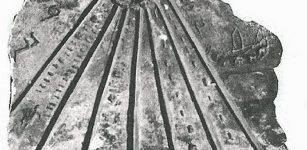 Controversial Davenport And Pontotoc Stele Reveal Ancient Egyptians And Black Africans Visited North America
Civilizations | Jun 27, 2014
Controversial Davenport And Pontotoc Stele Reveal Ancient Egyptians And Black Africans Visited North America
Civilizations | Jun 27, 2014 -
 Evidence Of Copper Processing Unearthed At Archaeological Site In Oman
Archaeology | Mar 6, 2024
Evidence Of Copper Processing Unearthed At Archaeological Site In Oman
Archaeology | Mar 6, 2024 -
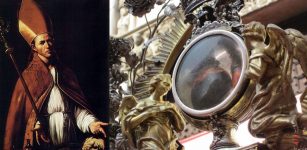 Blood Of St. Januarius – One Of The Most Remarkable Christian Relics
Artifacts | Jun 27, 2017
Blood Of St. Januarius – One Of The Most Remarkable Christian Relics
Artifacts | Jun 27, 2017 -
 On This Day In History: A Solar Eclipse Occurs, As Predicted By Thales Of Miletus – On May 28, 585 BC
News | May 28, 2016
On This Day In History: A Solar Eclipse Occurs, As Predicted By Thales Of Miletus – On May 28, 585 BC
News | May 28, 2016 -
 Origin Of The Genetic Code – Study
DNA | Dec 16, 2024
Origin Of The Genetic Code – Study
DNA | Dec 16, 2024 -
 Trentren And Caicai: The Battling Serpents Of Chilote Mythology
Featured Stories | Jul 10, 2022
Trentren And Caicai: The Battling Serpents Of Chilote Mythology
Featured Stories | Jul 10, 2022 -
 The Inca Empire Was Powerful And Well-Organized – Why Were They So Successful?
Ancient History Facts | Sep 21, 2020
The Inca Empire Was Powerful And Well-Organized – Why Were They So Successful?
Ancient History Facts | Sep 21, 2020 -
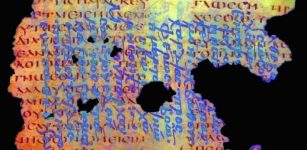 Never-Before-Seen Ancient Texts Hidden In Saint Catherine’s Monastery In Sinai Are Now Available Online
Archaeology | Dec 21, 2017
Never-Before-Seen Ancient Texts Hidden In Saint Catherine’s Monastery In Sinai Are Now Available Online
Archaeology | Dec 21, 2017 -
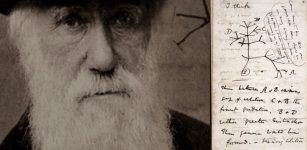 Who Has Stolen Charles Darwin’s Notebooks Worth Millions From The University Of Cambridge?
News | Nov 24, 2020
Who Has Stolen Charles Darwin’s Notebooks Worth Millions From The University Of Cambridge?
News | Nov 24, 2020 -
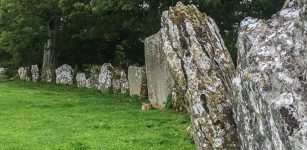 ‘Lios na Grainsi’ – Ireland’s Largest Stone Circle
Civilizations | Feb 3, 2016
‘Lios na Grainsi’ – Ireland’s Largest Stone Circle
Civilizations | Feb 3, 2016 -
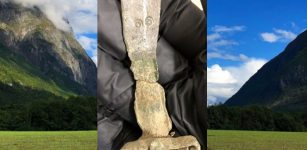 1154 Ancient Holes At Løykja Reveal Something Extraordinary – Archaeologists Say
Archaeology | Jul 17, 2020
1154 Ancient Holes At Løykja Reveal Something Extraordinary – Archaeologists Say
Archaeology | Jul 17, 2020 -
 Ancient Intercontinental Underground Tunnels Built By Survivors Of A Great Catastrophe And The Snake God Connection
Ancient Mysteries | Jul 4, 2018
Ancient Intercontinental Underground Tunnels Built By Survivors Of A Great Catastrophe And The Snake God Connection
Ancient Mysteries | Jul 4, 2018 -
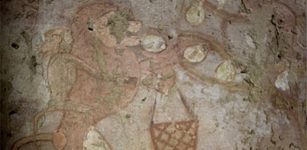 Tomb Of Hathor’s Priestess Hetpet Unearthed Near Pyramid Of Khafre, Cairo, Egypt
Archaeology | Feb 5, 2018
Tomb Of Hathor’s Priestess Hetpet Unearthed Near Pyramid Of Khafre, Cairo, Egypt
Archaeology | Feb 5, 2018 -
 Mysterious Hakkari Stelae: Were They Carved By Inhabitants Of Ancient Kingdom Of Hubushkia?
Artifacts | Nov 15, 2018
Mysterious Hakkari Stelae: Were They Carved By Inhabitants Of Ancient Kingdom Of Hubushkia?
Artifacts | Nov 15, 2018 -
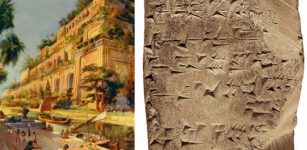 Modern Banking Concept Started In Ancient Babylonian Temples
Ancient History Facts | Mar 7, 2016
Modern Banking Concept Started In Ancient Babylonian Temples
Ancient History Facts | Mar 7, 2016 -
 Ancient Secrets Of Karelia: Mysterious Vottovaara Mountain Was Sacred To The Sami People
Featured Stories | Apr 5, 2017
Ancient Secrets Of Karelia: Mysterious Vottovaara Mountain Was Sacred To The Sami People
Featured Stories | Apr 5, 2017 -
 Secrets Of The Ancient Children Of The Moon Whose God Came From Outer Space In A Shining Flying Disc
Ancient Mysteries | Jun 1, 2020
Secrets Of The Ancient Children Of The Moon Whose God Came From Outer Space In A Shining Flying Disc
Ancient Mysteries | Jun 1, 2020 -
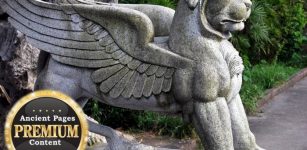 Strange Ancient Mechanical Flying Animals – Myths Or Advanced Ancient Technology? – Part 1
Ancient Mysteries | Mar 25, 2020
Strange Ancient Mechanical Flying Animals – Myths Or Advanced Ancient Technology? – Part 1
Ancient Mysteries | Mar 25, 2020 -
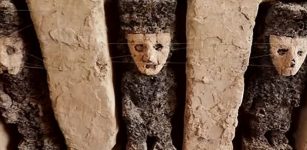 Wooden Pre-Columbian Human-Like Statues Discovered At Chan Chan Complex In Peru
Archaeology | Oct 25, 2018
Wooden Pre-Columbian Human-Like Statues Discovered At Chan Chan Complex In Peru
Archaeology | Oct 25, 2018 -
 Kussara – Ancient Lost City Of The Old Hittite Kingdom
Featured Stories | Jul 7, 2021
Kussara – Ancient Lost City Of The Old Hittite Kingdom
Featured Stories | Jul 7, 2021


